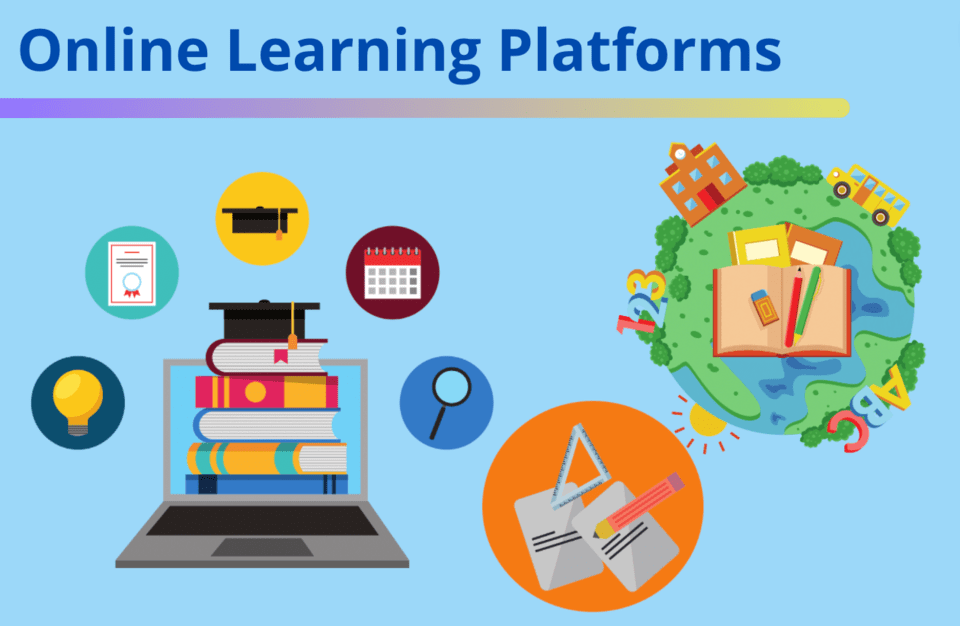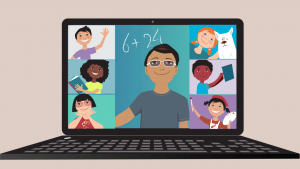How E-Learning Transforms Traditional Education Techniques for Kids
The change in the direction of e-learning has greatly modified traditional education and learning methods for youngsters, embedding interactive systems that mesmerize young minds through multimedia components and gamified experiences. This change not just customizes learning paths, suiting different finding out styles and rates, but additionally bridges geographic separates, granting global access to high quality education and learning. The versatility supplied by e-learning schedules sustains a well balanced method to education. As we discover these ingenious changes, we should take into consideration exactly how these adjustments affect the future of education for the next generation.
Interactive Discovering Systems
Interactive understanding platforms have revolutionized the educational landscape by supplying vibrant and interesting environments for students. These platforms use a blend of multimedia aspects, such as videos, animations, and interactive workouts, to capture students' attention and help with deeper understanding of complex concepts. By integrating technology into the knowing process, these platforms offer an immersive experience that traditional books merely can not match.
One substantial benefit of interactive discovering systems is their ability to give instantaneous responses. This instant action assists trainees identify and correct blunders in real-time, advertising a more effective learning cycle. Furthermore, these systems often consist of gamified aspects, such as quizzes and incentive systems, which boost motivation and interaction.
Collaboration is an additional crucial feature; several interactive platforms offer devices for peer-to-peer interaction, making it possible for trainees to work with each other on jobs or go over topics in digital classrooms. This fosters a feeling of community and motivates collaborative discovering, which is important in creating critical reasoning and analytical skills.
Personalized Learning Paths
Structure on the benefits offered by interactive understanding systems, individualized finding out courses further enhance the academic experience by tailoring direction to satisfy the one-of-a-kind needs of each student. In conventional classrooms, teachers commonly encounter obstacles in resolving varied learning designs and speeds within a solitary lesson plan.
By using individualized discovering paths, trainees receive content and exercises that straighten with their existing level of understanding, thereby reducing stress and making the most of engagement. This approach not just cultivates a much deeper comprehension of subject matter but additionally advertises self-paced learning, making it possible for pupils to advance as rapidly or as slowly as necessary. In addition, individualized paths can include a selection of multimedia resources, such as videos, tests, and interactive simulations, to cater to different understanding choices.
Furthermore, instructors profit from real-time understandings right into each pupil's development, allowing them to supply timely treatments and support. The result is a much more responsive and dynamic educational setting, where each trainee's potential can be completely realized.
Instantaneous Access to Details

Unlike typical education techniques, where details is often restricted to books and classroom lectures, e-learning breaks down these obstacles. Pupils can now access the most up to date study, multimedia content, and professional point of views from around the globe, thereby expanding their viewpoints and improving their knowing experience. E-learning devices such as search engines, academic applications, and on-line data sources ensure that trainees can discover pertinent info rapidly and efficiently.
Furthermore, the capability to gain access to details immediately supports important reasoning and problem-solving skills. When students experience see post obstacles or questions, they can easily look for answers and confirm truths, promoting a more active and engaged learning process. This vibrant strategy to details access prepares pupils for the demands of the contemporary globe, where the capability to swiftly use and absorb understanding is crucial.
Flexible Learning Schedules
Among the vital benefits of e-learning is its capability to provide flexible learning timetables, suiting the varied requirements and lifestyles of students. Unlike traditional class setups that adhere to rigid schedules, e-learning platforms allow pupils to gain access to academic content any time. This adaptability is especially useful for children that have extracurricular dedications or health concerns that may otherwise interrupt their knowing process.
The asynchronous nature of e-learning makes certain that trainees can progress at their very own speed, revisiting complicated topics as required without feeling hurried. This individualized strategy not only helps in enhancing understanding but likewise fosters a much more individualized educational experience - Education and study for children and kids. Furthermore, flexible organizing can be beneficial for moms and dads, enabling them to much better align their youngster's education with family members routines and obligations
Moreover, the versatility of e-learning schedules can dramatically decrease pupil stress and exhaustion. By having the liberty to choose learning times that line up with their optimal cognitive performance durations, pupils can accomplish much better emphasis and retention. This degree of customization is a game-changer for contemporary education and learning, providing an inclusive setting that supports each pupil and values's distinct discovering design and requirements.
Connecting Geographical Voids
E-learning has transformed education and learning by properly linking geographic gaps, therefore equalizing accessibility to top quality education regardless of area. Typical education methods usually constrained students in underserved or remote locations, restricting their accessibility to sources and opportunities readily available in urban centers. However, e-learning systems remove these redirected here obstacles by supplying digital accessibility to Recommended Reading a riches of educational materials, professional instructors, and interactive learning experiences.

Furthermore, e-learning systems allow individualized knowing, providing to the distinct demands and pace of specific students. This versatility is particularly valuable for children in geographically separated regions who might not have access to specialized guideline. The introduction of e-learning has actually transformed the educational landscape, making certain that geographic place no much longer determines the quality of education a kid obtains.
Final Thought
E-learning considerably transforms typical education by including interactive platforms, individualized finding out paths, and instantaneous access to details. This approach supports versatile understanding schedules and bridges geographical voids, thus improving the accessibility and quality of education for youngsters. By fostering partnership and advertising critical thinking, e-learning not only accommodates varied learning styles however additionally makes the instructional experience a lot more effective and engaging. E-learning improves the instructional landscape, making it much more satisfying and versatile for young students.
Interactive understanding systems have actually reinvented the academic landscape by supplying engaging and dynamic settings for pupils (Education and study for children and kids).Structure on the advantages provided by interactive knowing platforms, personalized learning courses better boost the instructional experience by customizing instruction to fulfill the one-of-a-kind demands of each pupil. Trainees can now access the most current study, multimedia content, and specialist point of views from around the world, consequently expanding their point of views and enriching their learning experience.One of the crucial benefits of e-learning is its capability to provide flexible knowing schedules, accommodating the varied demands and way of lives of students.In addition, e-learning systems allow personalized understanding, providing to the special requirements and pace of individual students